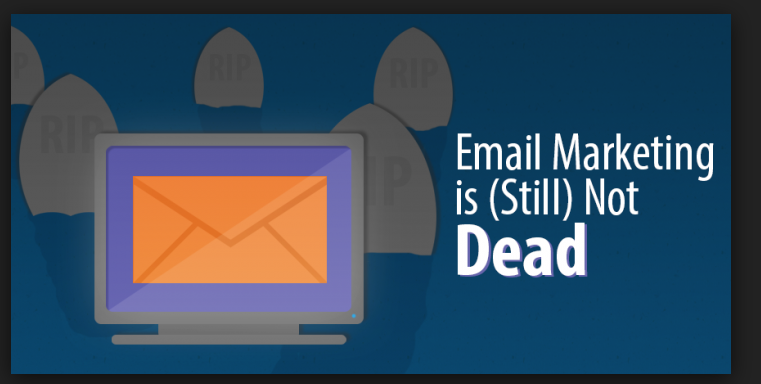Email marketing is (still) not dead
Email marketing has stood the test of time! It has literally spanned the various stages of the digital marketing evolution and is still growing from strength to strength.
With more than 269 billion emails sent daily, can your company afford to not use it as a marketing channel?
So how big has email marketing become? Below are a few statistics to show that this ‘oldie (first one was developed in 1971), but goodie’ is still as effective as ever.
- Consumers who purchase products through email spend, on average, 138% more than those that don’t receive email offers.
- 77% of people prefer to get permission-based promotional messagesvia email (versus direct mail, text, phone, or social media).
- The use of emoji in email marketingmessages increased 775% from 2015 to 2016.
- The percentage of emails containing GIFs rose from 5.4% in 2015 to 10.3% in 2016.
- A study of 1 billion emails revealed that video emails see CTRs 96% higher than non-video emails.
- For every $1 spent on email marketing $44 is made in return, according to a study by Campaign Monitor.
- Emails that included the first name of the recipient in their subject line had higher click-through rates than emails that did not (HubSpot, 2014).
- Three-quarters of companies agree that email offers “excellent” to “good” ROI (Econsultancy, 2016).
- Email use worldwide will top 3 billion users by 2020. (The Radicati Group, 2016)
- 86% of consumers would like to receive promotional emails from companies they do business with at least monthly, and 15% would like to get them daily (Statista, 2015).
- 80% of retail professionalsindicate that email marketing is their greatest driver of customer retention (the next closest channel? Social media, identified by just 44% of those same professionals).
- Segmented and targeted emails generate 58% of all revenue (The Direct Marketing Association, 2015).
- According to DMA Insight’s 2016 email benchmarks, the average deliverability rate for email was 98%.
- Why email: cheap, wide range, higher ROI and measurable.
- 89% marketers said that email was their primary channelfor lead generation (Mailigen).
- Email marketing spendingin the United States would grow from 2.07 billion U.S. dollars in 2014 to 3.07 billion U.S. dollars in 2019 (Statista).
- Email list segmentation and personalised emailing were the most effective email strategiesof 2017 (DMA).
- Emails that include some sort of graphics have a higher open rate (26.89%) and higher click-through rate (4.36%) than that of text-based emails (GetResponse).
- 47% of email recipients open email based on the subject line(Invesp).
- When you build an email database, you own that database, but you’ll never own social…
Email is such a big part of our lives, we just assume everyone has an account and a big portion of the population does have one as you need it to log in on most digital platforms / apps etc. It is clear that email reach most individuals it is intended for, no matter their age group and should definitely be included in your marketing strategy.
Just to be clear: Email marketing isn’t going anywhere.
References:
https://www.hubspot.com/marketing-statistics
https://expandedramblings.com/index.php/email-statistics/
https://www.wordstream.com/blog/ws/2017/06/29/email-marketing-statistics
https://emailmonks.com/blog/email-marketing/email-marketing-statistics/




